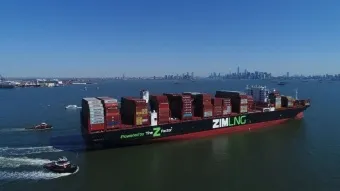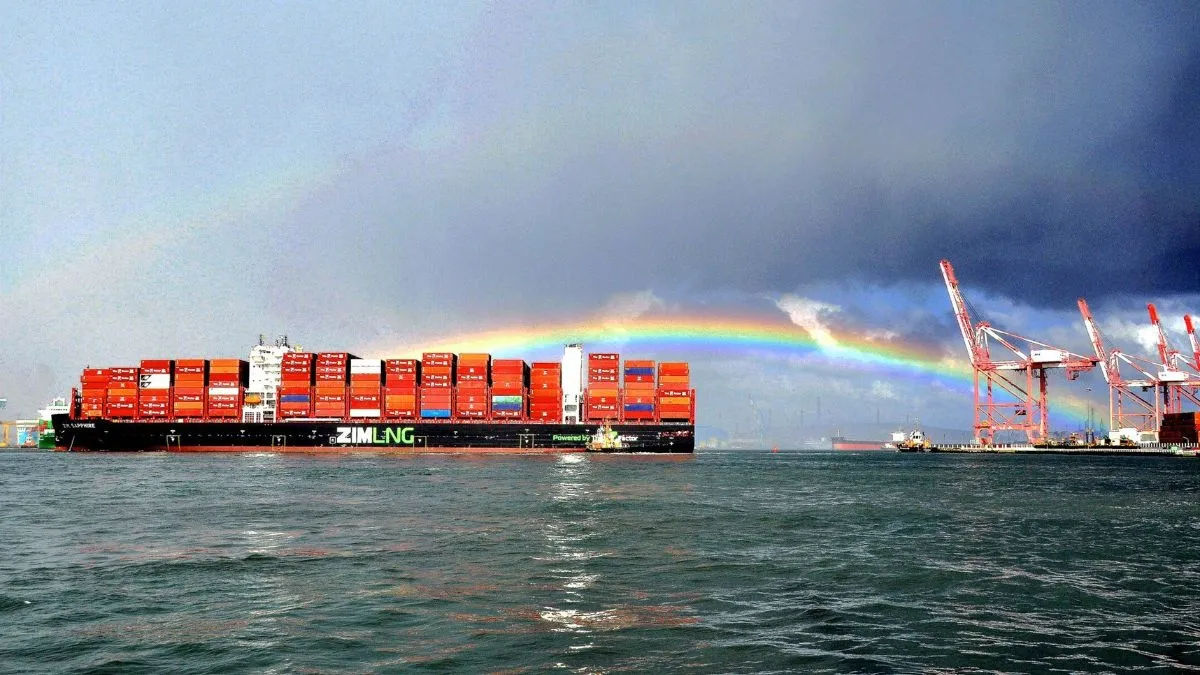Today, ZIM announced its consolidated business results for the second quarter and first half of 2025. Total revenue amounted to $3.64 billion in the first half of 2025, compared to $3.49 billion in the same period last year. The increase is primarily attributed to a rise in freight rates and the volume of cargo transported.
In the second quarter of 2025, revenue totaled $1.64 billion, compared to $1.93 billion in the same period last year - a decrease of 15%. The decline is mainly attributed to a decrease in freight rates and the volume of cargo transported.
ZIM transported 895,000 TEUs in the second quarter of 2025, compared to 952,000 TEUs in the same period last year - a decrease of 6%. The average freight rate per TEU stood at $1,479 in the second quarter of 2025, compared to $1,674 in the same period last year - a decrease of 12%.
Operating profit (EBIT) in the second quarter of 2025 amounted to $149 million, compared to $468 million in the same period last year. The decrease is mainly attributed to the aforementioned decrease in revenue.
Net profit in the second quarter of 2025 amounted to $24 million, compared to $373 million in the same period last year, a decrease mainly attributed to the aforementioned decrease in revenue.
Adjusted EBITDA in the second quarter of 2025 amounted to $472 million, compared to $766 million in the same period last year - a decrease of 38%. Adjusted EBIT amounted to $149 million in the second quarter of 2025, compared to $488 million in the same period last year. The adjusted EBITDA and EBIT margins in the second quarter of 2025 stood at 29% and 9% respectively, compared to 40% and 25% respectively in the same period last year.
Cash flow from operating activities amounted to $441 million in the second quarter of 2025, compared to $777 million in the same period last year.
Total revenue amounted to $3.64 billion in the first half of 2025, compared to $3.49 billion in the same period last year – an increase of 4.2%. The increase is mainly attributed to a rise in freight rates and the volume of cargo transported.
In the first half of 2025, ZIM transported 1,839,000 TEUs, compared to 1,799,000 TEUs in the same period last year. The average freight rate per TEU stood at $1,632 in the first half of 2025, compared to $1,569 in the same period last year.
Operating profit (EBIT) in the first half of 2025 amounted to $613 million, compared to $635 million in the same period last year. The decrease in operating profit in the first half of 2025 is mainly attributed to an increase in fuel and operating expenses, offsetting the aforementioned increase in revenue.
Net profit in the first half of 2025 amounted to $320 million, compared to $465 million in the same period last year, a decrease mainly attributed to the factors of change in EBIT mentioned above, as well as accounting aspects of income tax.
Adjusted EBITDA amounted to $1.25 billion in the first half of 2025, compared to $1.19 billion in the same period last year. Adjusted EBIT amounted to $612 million in the first half of 2025, compared to $655 million in the same period last year. The adjusted EBITDA and EBIT margins in the first half of 2025 stood at 34% and 17%, respectively, compared to 34% and 19% in the same period last year.
Cash flow from operating activities amounted to $1.30 billion in the first half of 2025, compared to $1.10 billion in the same period last year.
Eli Glickman, President and CEO of ZIM, said: 'Against the backdrop of market disruptions and high volatility, we continued during the second quarter to leverage our upgraded fleet and improved cost structure. In a high-uncertainty market environment, we are focusing on controlling the factors we can influence to position ZIM for sustainable and profitable growth in the long term.'
Eli Glickman added: 'Our strength lies in the quality of our modern and competitive fleet and our commercial flexibility that allows us to respond quickly to changes in demand on all our global trade routes. We see this flexibility as a critical component in our ability to operate dynamically, while continuing to identify attractive opportunities that will ensure the continued efficiency of our fleet in the future. We are confident that our commitment to operational excellence, combined with our growing diversification in our geographical spread, will lead to further strengthening of business resilience in the future.'
Eli Glickman concluded: 'In light of our performance so far, we have raised the midpoint of our forecasts for 2025. We now expect an annual adjusted EBITDA in the range of $1.8 billion to $2.2 billion and an adjusted EBIT in the range of $550 million to $950 million. We intend to rely on our upgraded fleet and improved cost structure to continue to generate long-term value for our shareholders, even in the face of challenging and unpredictable market dynamics.'
The company updated its forecast for 2025, and now expects an adjusted EBITDA in the range of $1.8 billion to $2.2 billion and an adjusted EBIT in the range of $550 million to $950 million. The company's previous forecast stood at an adjusted EBITDA in the range of $1.6 to $2.2 billion and an adjusted EBIT in the range of $350 million to $950 million.
In accordance with the company's dividend policy, the company's board of directors announced a regular cash dividend of approximately $7 million, or $0.06 per ordinary share, reflecting about 30% of the net profit for the second quarter of 2025.
ZIM Reports Net Profit of $320 Million in H1 2025
ZIM has reported a net profit of $320 million for the first half of 2025, despite a challenging market environment. The company attributes its performance to increased freight rates and cargo volume.
14:27 ,20.08.2025
-
Found it useful? Share
-
Share on Facebook
-
Share on X
-
Share on LinkedIn
-
Share via Email
-
Share on WhatsApp
-
Print Article
Related
 19.06.2025
19.06.2025
New Combined Air-Sea Cargo Service Launched by ZIM
 19.05.2025
19.05.2025
ZIM Reports Q1 2025 Net Profit of $296 Million
 11.05.2025
11.05.2025
Israel-Morocco Maritime Transport Agreement Gets Green Light
 08.04.2025
08.04.2025
ZIM Inks Deals for 10 New LNG-Powered Vessels
 12.03.2025
12.03.2025
ZIM Reports Record Revenues and Profits for 2024, Expects Continued Growth in 2025
 05.03.2025
05.03.2025
MSC Offers a New Alternative for Vehicle Import in Containers

